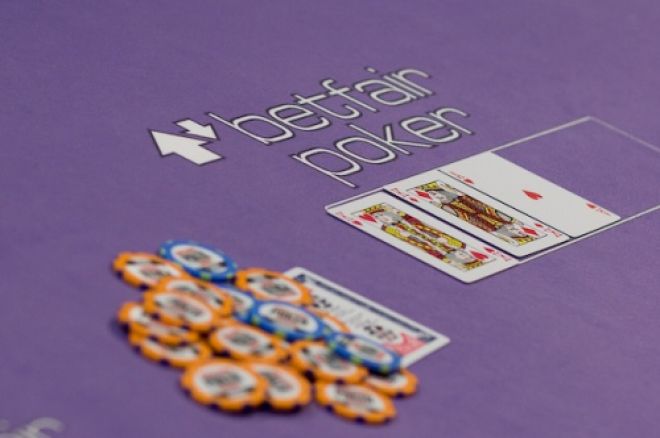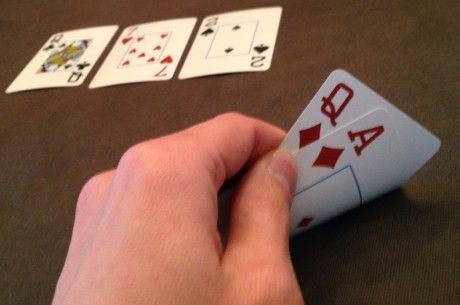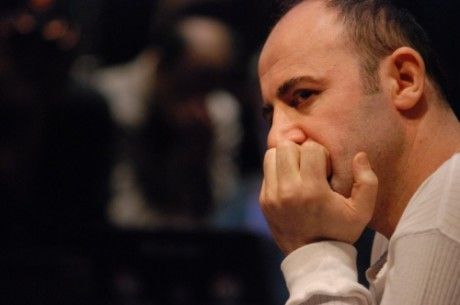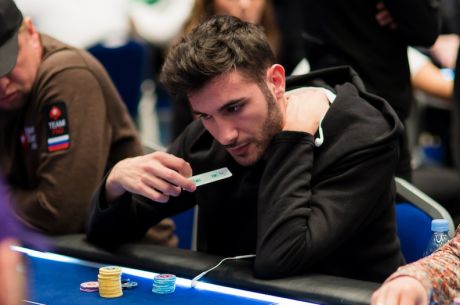Five Examples of Using Blockers to Improve Your Hand Reading

Poker is a game of incomplete information. One way to approach that game is to use what you know, including the cards you can see, to deduce what you don’t know, namely your opponent’s cards.
When you use your own cards to help determine what cards your opponent might have, the cards in your hand can be referred to as “blockers” because your having them blocks the possibility of your opponent having them. The cards you can see in your hand as well as the ones you can see on the board can help you to narrow down your opponent’s range and get you one step closer to figuring out what he can have.
I take blockers into consideration often when trying to narrow my opponents’ ranges of possible hands. Here are five examples of how I use blockers in no-limit hold’em to help with hand reading.
1. Top set has blockers to top pair
Let’s say the board comes AxXxXx and I hold AxAx. This is a spot where I will slow play my hand if the board is dry. This is because the ace-blockers in my hand coupled with the ace on the board make it extremely unlikely that my opponent holds an ace as well — the case ace — thus making it also unlikely for him to pay off a value bet.
But if the board is wet, I will consider betting anyway to get value from his draws. Holding AxKx instead of AxAx in this spot has a similar, but less dramatic effect.
2. Big cards are blockers to big pairs
Suppose I raise with AxKx and my opponent three-bets me. I am more likely to four-bet shove with AxKx than with QxQx. Having both an ace-blocker and a king-blocker in my hand decreases the likelihood that he has AxAx or KxKx. There are 12 possible combinations of these hands — AxKx blocks half of them, while QxQx blocks none of them.
When I have AxKx, my opponent is less likely to have the only two hands that have me crushed. For this reason, I am comfortable playing AxKx fast and furiously in this spot.
3. Two pair has blockers to sets
If I have top two pair on a board like Kx10x5x-rainbow, I play my hand very strongly because I block some of the sets which are the only hands that have me in trouble. There are 9 possible combinations of sets on this board and I block 4 of them.
I play this spot similarly to the way I play top set. I may slow play if the board is dry because top two pair blocks top pair which is the hand most likely to pay me off. But I will go ahead and bet on wet boards to get value from draws.
4. Pocket pairs have blockers to straights
Let’s say I have 10x10x on a board like 9x8x2x7x3x. I will be skeptical if my opponent is representing the nut straight because he needs a 10x to have it and I have two of them in my hand. This makes 10x10x a better bluff-catching candidate in this spot than a hand like Ax9x. On this board, I may call him down if he is the type who bets a polarized range.
Meanwhile if the board instead read 9x8xQx7xAx, I may use my blockers to bluff myself. Pocket tens does not have a ton of showdown value on this board, but it still has blockers to the nuts. I know that my opponent is unlikely to have Jx10x, but he does not have the same read on me, and therefore I can better represent the nuts with a bluff.
5. Big flush cards are blockers to flushes
Lastly, suppose I have A♠X♦ on a board like K♠J♠2♥. If a small spade comes on the turn and my opponent represents a flush, I will know that he is unlikely actually to hold it. First, he cannot hold the nut flush because I have the A♠-blocker. In addition, he is unlikely to hold other flush combos given that most of the bigger flush cards, namely the K♠ and J♠, are blocked by the cards on the board. Most players do not play widely-gapped suited cards like Q♠2♠ or 10♠4♠. Granted, they will play small suited connectors like 6♠5♠, but they tend not to play them very aggressively for fear of bigger flushes.
On this board, I would expect my opponent to play aggressively with combos like Q♠10♠, Q♠9♠, and 10♠9♠. These make up only a small fraction of his preflop range, so I know it is hard for him to have a flush that he is proud of on this board when I can see the A♠, K♠, and J♠ as blockers. The flip side to this point is that if the turn were instead a blank and he decides to bet the river, he is less likely to hold a busted flush draw which makes bluff-catching less profitable. In this case, I am more likely to give him credit for a real hand and fold.
Small stakes players like myself are sometimes baffled as to how pros like Daniel Negreanu seem to be able to look into our souls and read what we have in our hands. Using blockers in conjunction with our actions allows savvy players like Negreanu to piece together the puzzle and narrow down our range.
If you want to improve your own hand reading abilities, consider taking blockers into consideration the next time you are trying to put your opponent on a hand.
Get all the latest PokerNews updates on your social media outlets. Follow us on Twitter and find us on both Facebook and Google+!








